Overview of 1.2 update squeeze and other preflop calculations
This update includes support for most preflop tournament spots: squeezes, limps, auto blind all-ins and other. Nash equilibrium ranges can now be calculated for MTT spots with upto 20 players. Visual looks and range editing have been enhanced. Added names for saved ranges. Detailed overview below.
Most of new features have been briefly described in previous icmizer anniversary post, which I recommend you to read if you still havent for some reasons. In this post there are more actual details and screenshots.
ICMIZER now support literally any tournament preflop spot.
Previous version of ICMIZER supported limited amount of tournament spots, letting players to figure out how to play in most common tournament spots, like open shove, calling open shove, or two open shoves, performing a 3 bet steal, 4 bet resteal and a few other.
After this update ICMIZER can calculate hero range for squeeze spots, spots where big blind or small blind player has a very short stack and is automatically all-in, situations where hero faces one or more limpers or any combination of poker actions before hero. That would describe such spots where hero faces a raise, reraise and another reraise before him, or someone raises, someone else pushes, and another player calls that second shove, and hero can still perform a calculation for such extravagant spot.
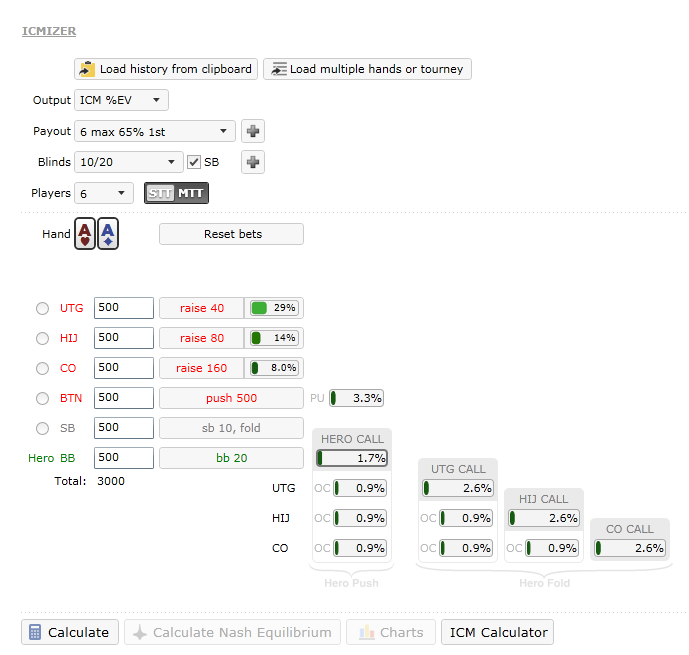
There exists just single hard limitation on preflop spot now: out of various opponent actions there can be maximum 2 all-in actions. ICMIZER takes overcall spots into account when it performs calculations, however it doesn’t include potential 4-way spots (for 2 good reasons, they are both super rare and close to impossible to implement).
Forced blind out auto all-in spot calculations
If big blind or small blind has very short stack and is automatically all-in ICMIZER considers his/her post blind action as first all-in action. In this case ICMIZER treats other players as acting after him, so this calculation becomes similar to any other calculation, where hero is facing a single all-in before him.
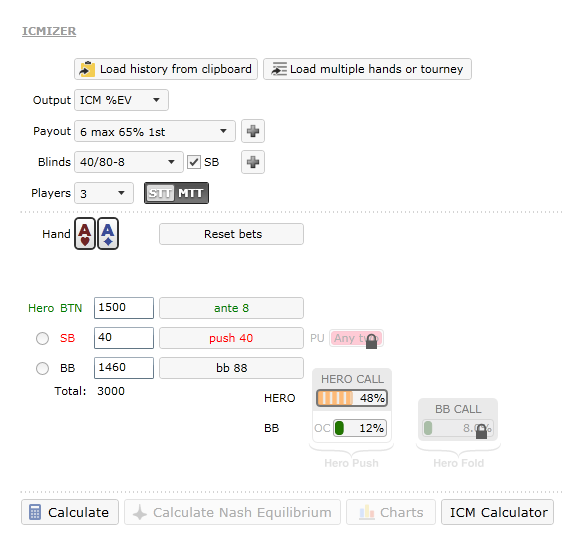
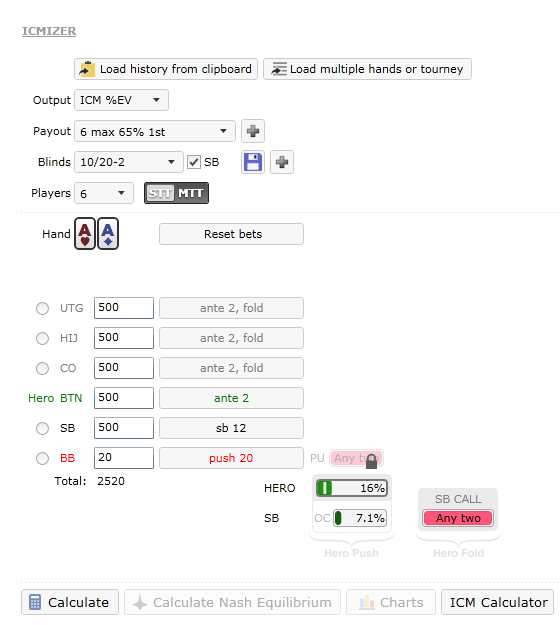
Note that his/her range is locked for editing in this case, because it is always equal to any two cards range.
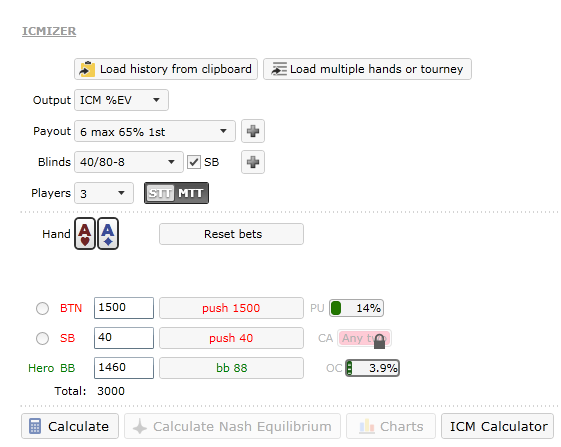
Squeeze calculations
Interesting type of previously unsupported spots are cases when there are several players who make the same bet. Normal squeeze spot occurs on hero is on big blind for example, and there is a raise and a call from another player before him. In this case hero didn’t act yet.
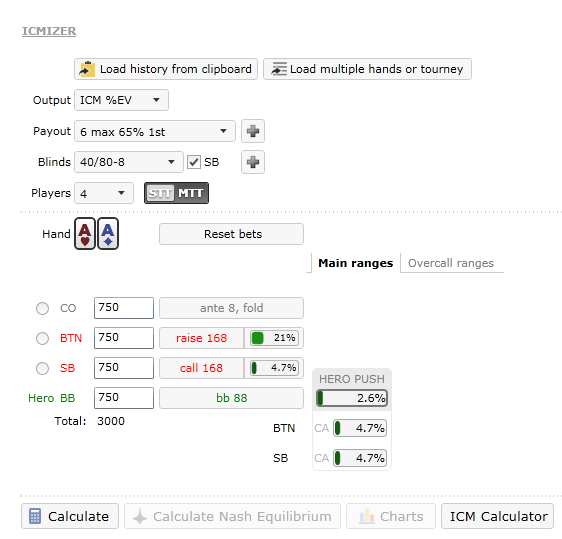
Hero can also raise first, then some player 3 bets him, and another calls from the big blind. Action goes back to hero, and he/she can now squeeze from early position. There can be several callers, and ICMIZER can calculate hero range for any of these spots.
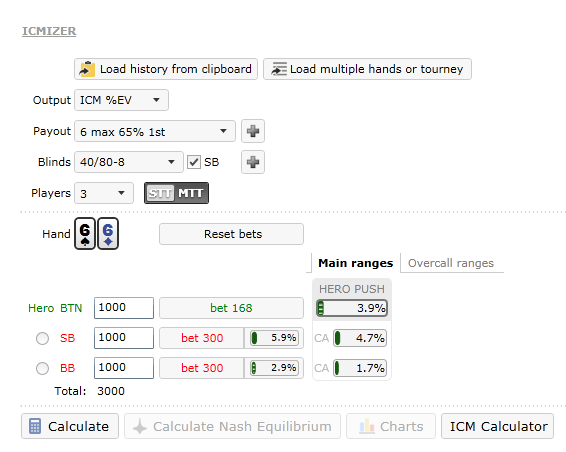
Please note important detail. If you are doing Chip EV calculations for MTT results will be precise. However when you perform ICM calculation using a tournament payout structure it becomes important how program evaluates hero equity for cases when he/she folds, and players with same bets go to postflop.
In case of postflop ICMIZER cannot predict what will happen, so if no one pushes it assumes that result of postflop action will be an evenly distributed pot between postflop participants. This is an approximation. In real world postflop action could easily result in one player busting, and that would increase hero tournament equity. This means, that EV fold is undervalued for this kind of calculation, and actual calculated shove range will often be wider than in reality, so you probably should manually tighten up results a little bit for this kind of calculations.
Nash equilibrium ranges can now be calculated for MTT hands with up to 20 players.
ICMIZER has unique MTT ICM calculator capabilities. However before it wasn’t possible to calculate Nash equilibrium ranges for situations where there was more than a single table with players remaining in tournament. Now it supports up to 20 players, which includes all pre-final table situations and covers 2 table SNG tournaments.
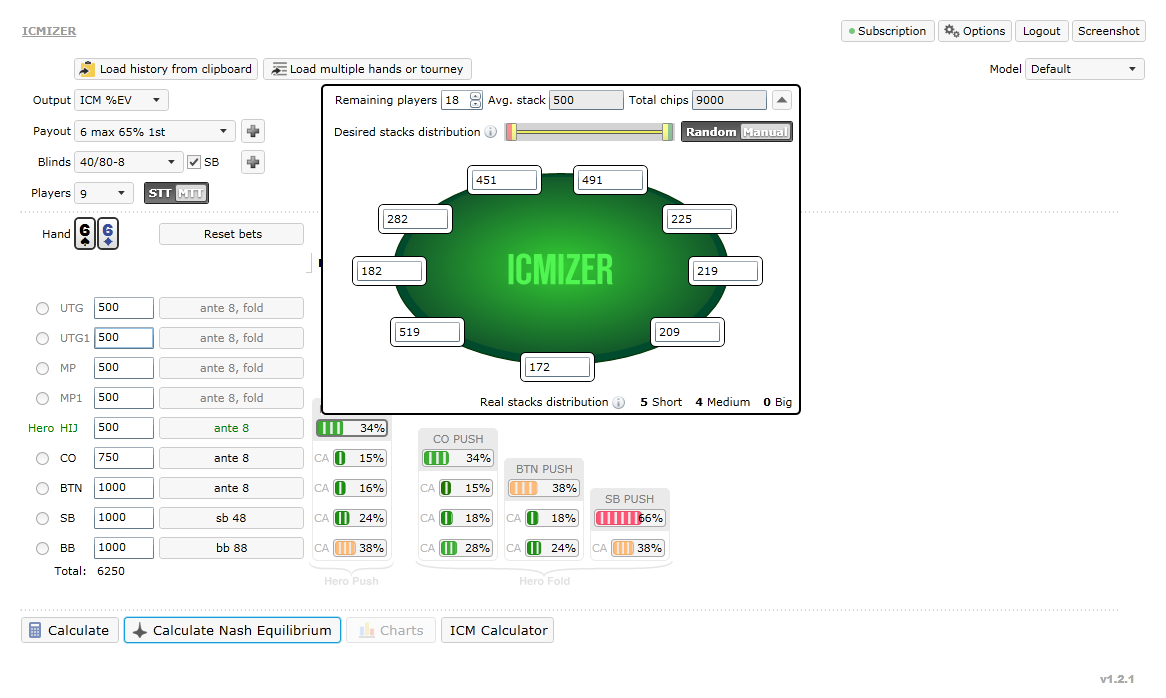
Visual range layout changes
One of the key parts of any preflop analysis is correctly assigning opponent ranges. In this update I have made it easier to assign desired ranges to desired players.
VPIP ranges are now displayed next to VPIP action
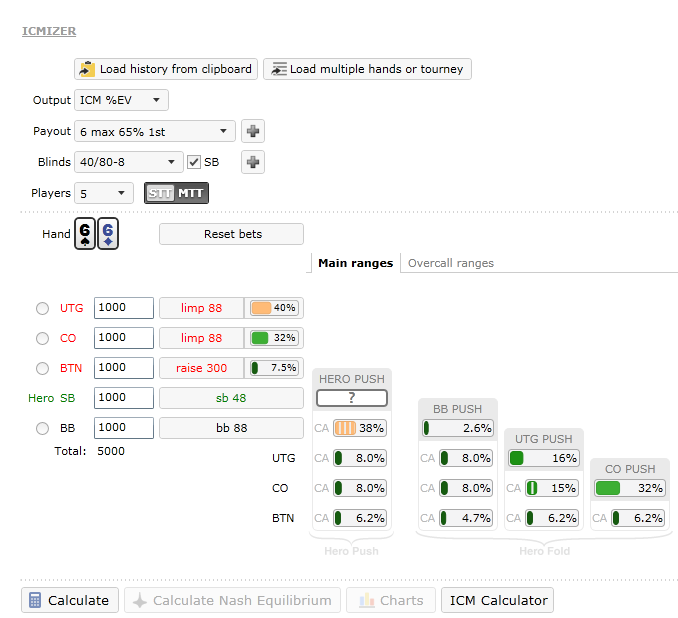
If player makes some non-fold action his/her range is now displayed next to this action. For example on the screenshot below first player limps 60% of hands. Second player raises with 15% of hands. VPIP ranges put a limit on shoving ranges. If someone only raises top 15% his/her call range against hero shove cannot include hands that are absent in initial raise range, for example crap like 32o.
Chip EV calculation range display changes
Previously ICMIZER always had 2 tabs for ranges, main and overcall ranges tabs. After this update this is no longer the case, and for Chip EV calculations all required ranges are always visible and available for edit.
When we perform a Chip EV calculation we don’t really care what happens when we fold, because that doesn’t change our expectation of fold. When we fold our Fold EV is simply equal to what remains of our stack. Because of this we do not need to assign ranges for players who act after hero, and can also push or call against each other.
Please check following screenshot. Note that opponent call ranges versus hero shove are at top of the columns. Overcall ranges are displayed inside those range columns. This should be pretty straightforward, just don’t forget to pay attention that its different than it used to be before.
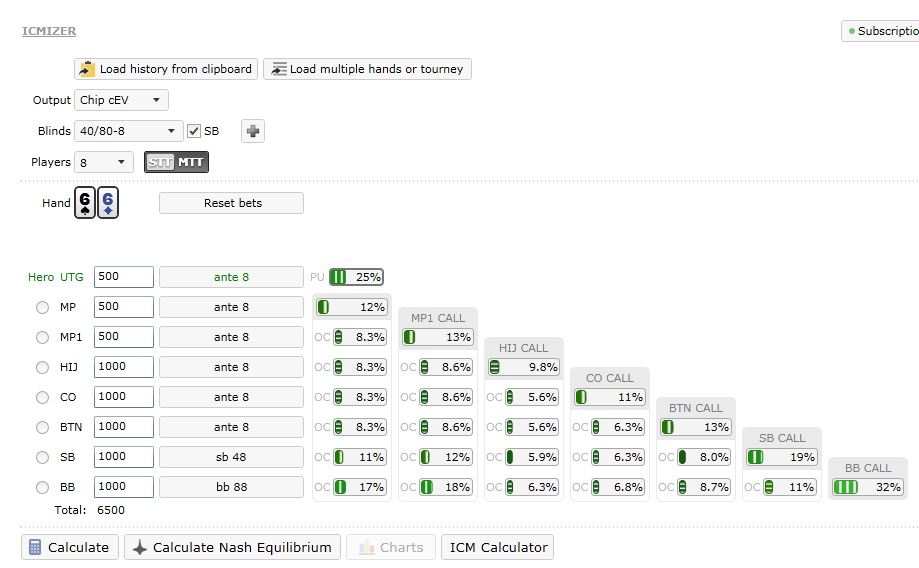
Three global types of preflop spots
Each preflop spot can belong to one of the following three global types: no all-in before hero, one all-in before hero or two all-ins before hero. ICMIZER now displays ranges differently for each of this types.
No all-ins before hero
A typical situation of this kind is when hero is considering an open shove and no one has acted yet. This is the most range heavy type of calculation. When hero folds, other players can push, and someone can call and even overcall them. It requires assigning a lot of ranges, and in this kind of spot we still need two tabs of ranges, because in worst cases of 10 players at the table and hero UTG we need to assign literally hundreds of ranges.
This type of spot is mostly unchanged. However overcall ranges tab has been enhanced a little. On overcall tab you can now not only edit OC ranges, but you can also see related push and call ranges, and edit them from overcall ranges tab too. Before it wasn’t always obvious, what kind of overcall spot you were editing, and when you didn’t know push and call range you would have to switch to main ranges tab first, and then find corresponding ranges there.
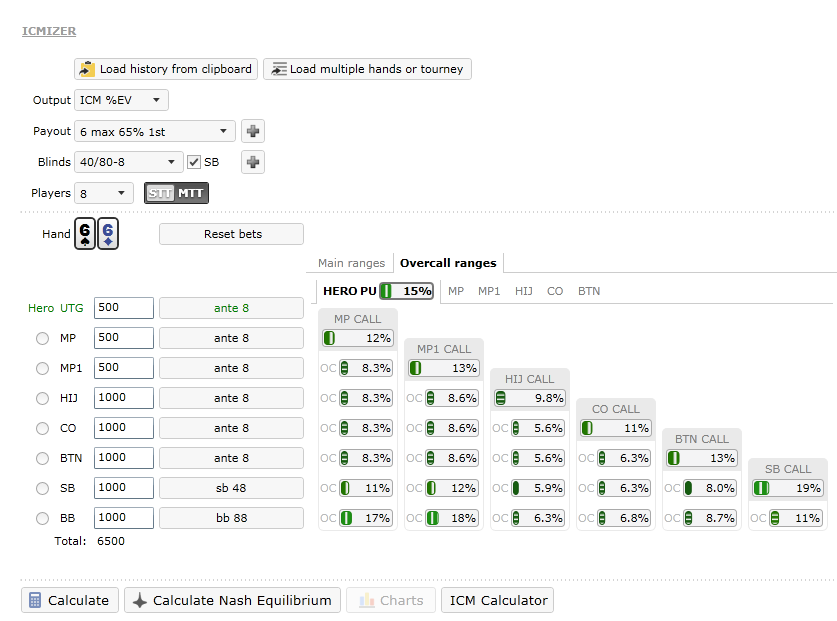
One all-in before hero
All editable ranges for this calculation are now visible on single tab now. It is similar to no all-ins before hero spot for chip EV calculations. All call ranges are displayed at the header of ranges columns. Overcall ranges are displayed inside columns. Everything should be pretty obvious from the following screenshot.
Please pay attention that this is different from previous way ICMIZER displayed ranges, but it is far more convenient and easy now.
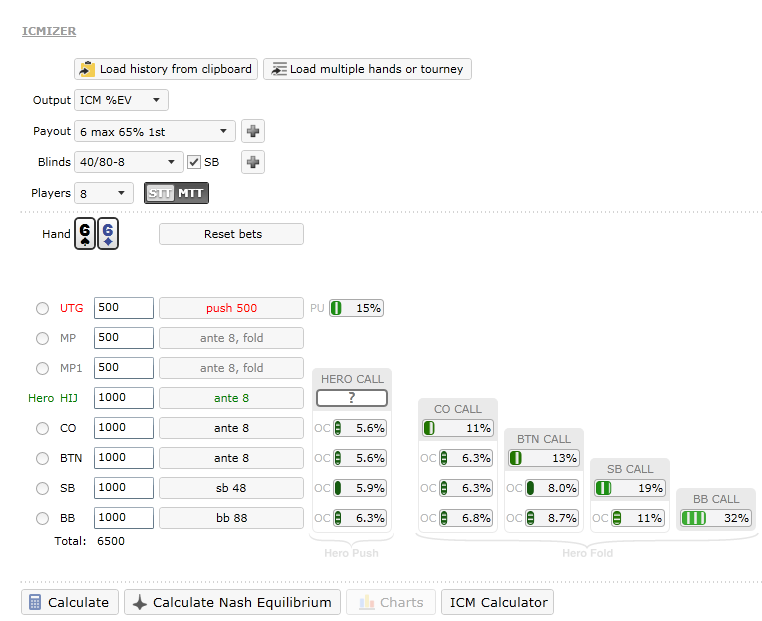
Two all-ins before hero
The simplest type of spot, with two all-in ranges known we can only edit few overcall ranges and we are ready to perform this overcall calculation. All ranges are displayed as single column, and everything should be clear from the screenshot.
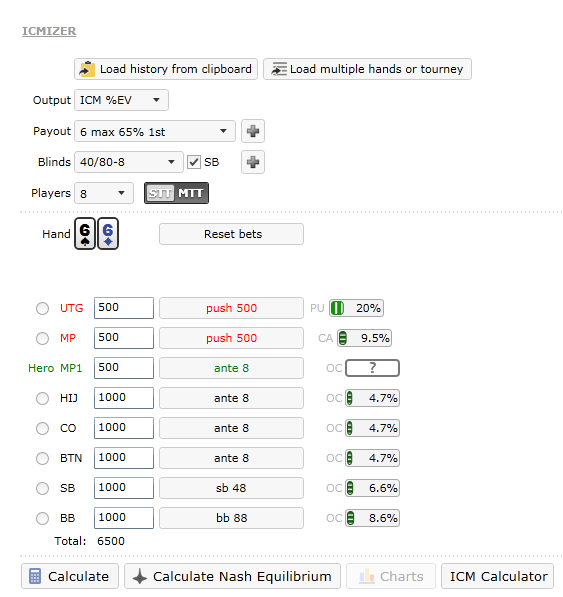
Hero range is now visible just like opponent ranges
ICMIZER is essentially a tool used to find out hero range. Before this update only way to see hero range was to hit calculate button. However this presented certain inconveniences in some cases. The most common problem occurred when someone performed Nash equilibrium calculation and solution was shown in ICMIZER but hero range wasn’t visible. You had to first assign Nash equilibrium ranges and then hit calculate button, in order to see hero range.
In this update hero range is now visible, and when you perform Nash equilibrium calculation it can be immediately seen without any additional clicks.
Before you assign Nash ranges or perform calculation hero range is unknown and displayed as a question mark. Note that you cannot edit hero range, because it is a calculated variable, not an assigned variable, like some other player push range for example.
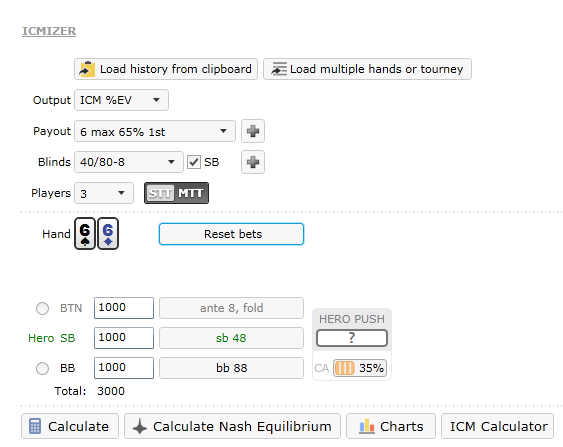
Once you perform a calculation you can “edit” hero range by adjusting min expected value diff% value on results tab.
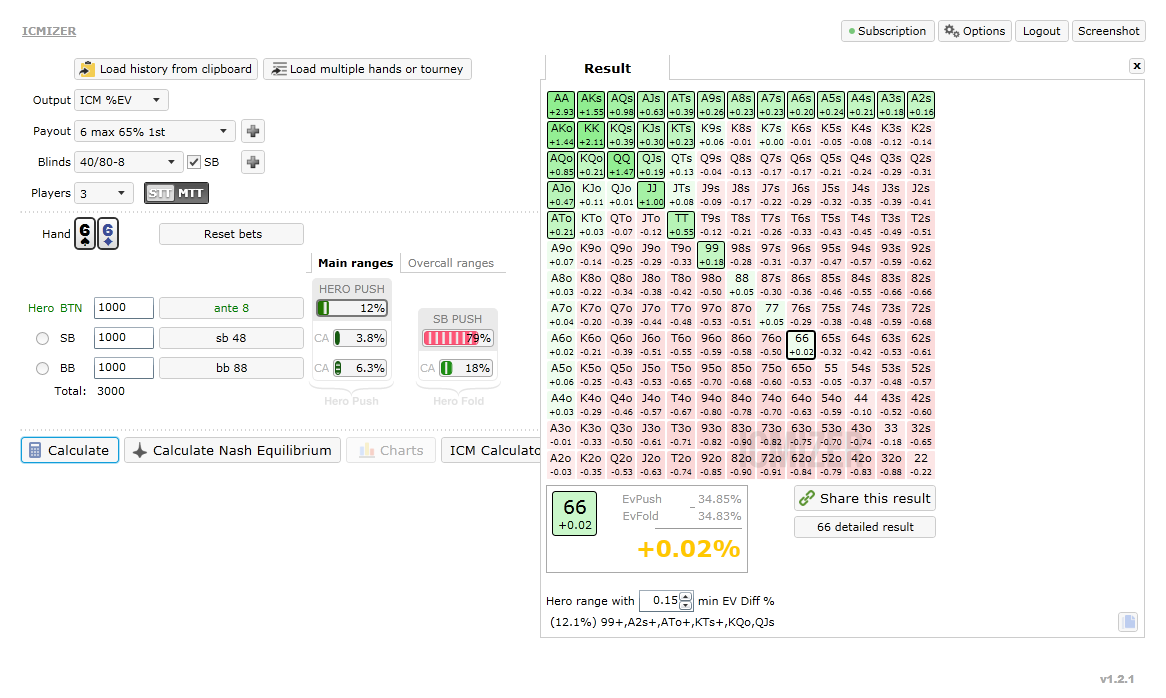
Saved ranges can now have names
You can now name ranges, which you save for further use, if you choose to do so. Players who had a lot of saved ranges reported that it wasn’t easy to use them, because it was hard to differentiate ranges from one another. Now you can use names, and for example have 40% PUSH range and 40% CALL range for heads up spot, which could include completely different hands, and easily choose the right one when you need it.
Using saved ranges is very simple, just hit [Save] button next to range in range editor, and assign a name if you want. Note that you don’t have to assign a name for saved range, and in that case no name will be displayed next to it. Basically program will work as it did before it was possible to name ranges.
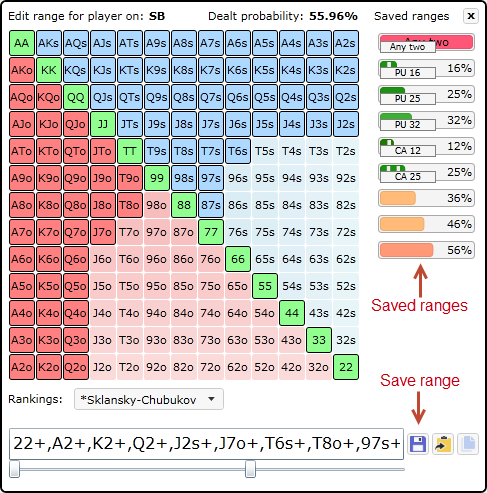
Range vs Range chart results can now be copied
Using charts for situation analysis can be pretty powerful. Some players find Nash equilibrium plays using charts for resteal spots or use them for other purposes. You always could see specific point details, when you hovered over graph. Now you can simply click on a point and copy ranges, which are related to this point from popup.
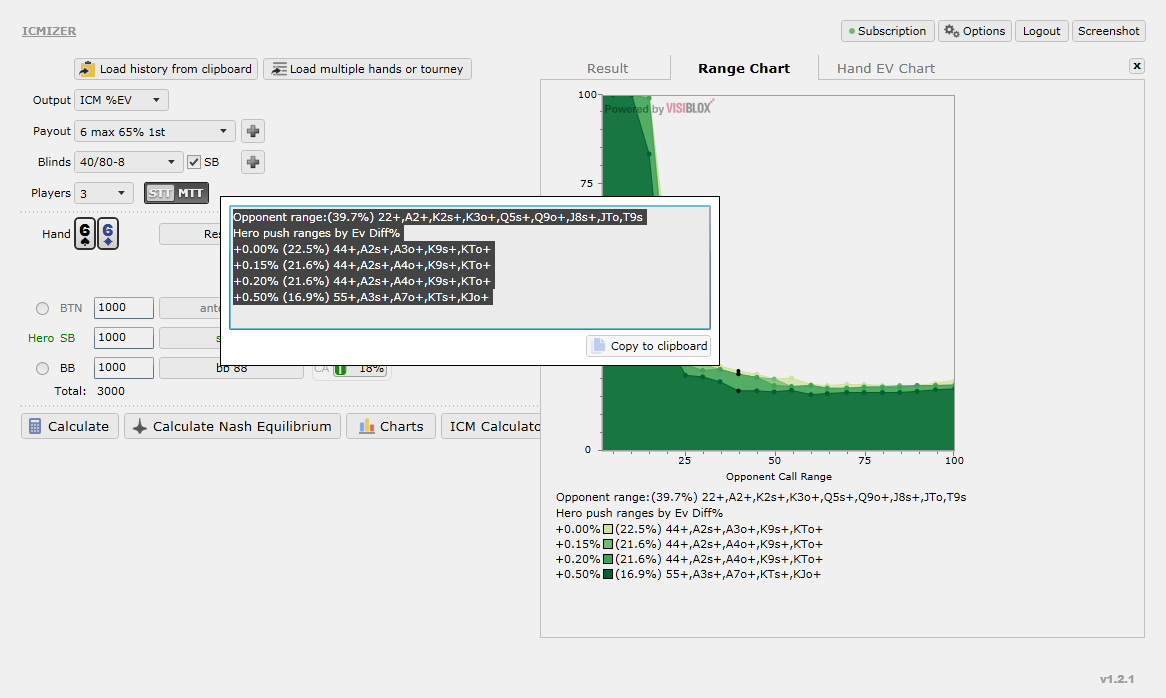
Downloadable version is now resizable
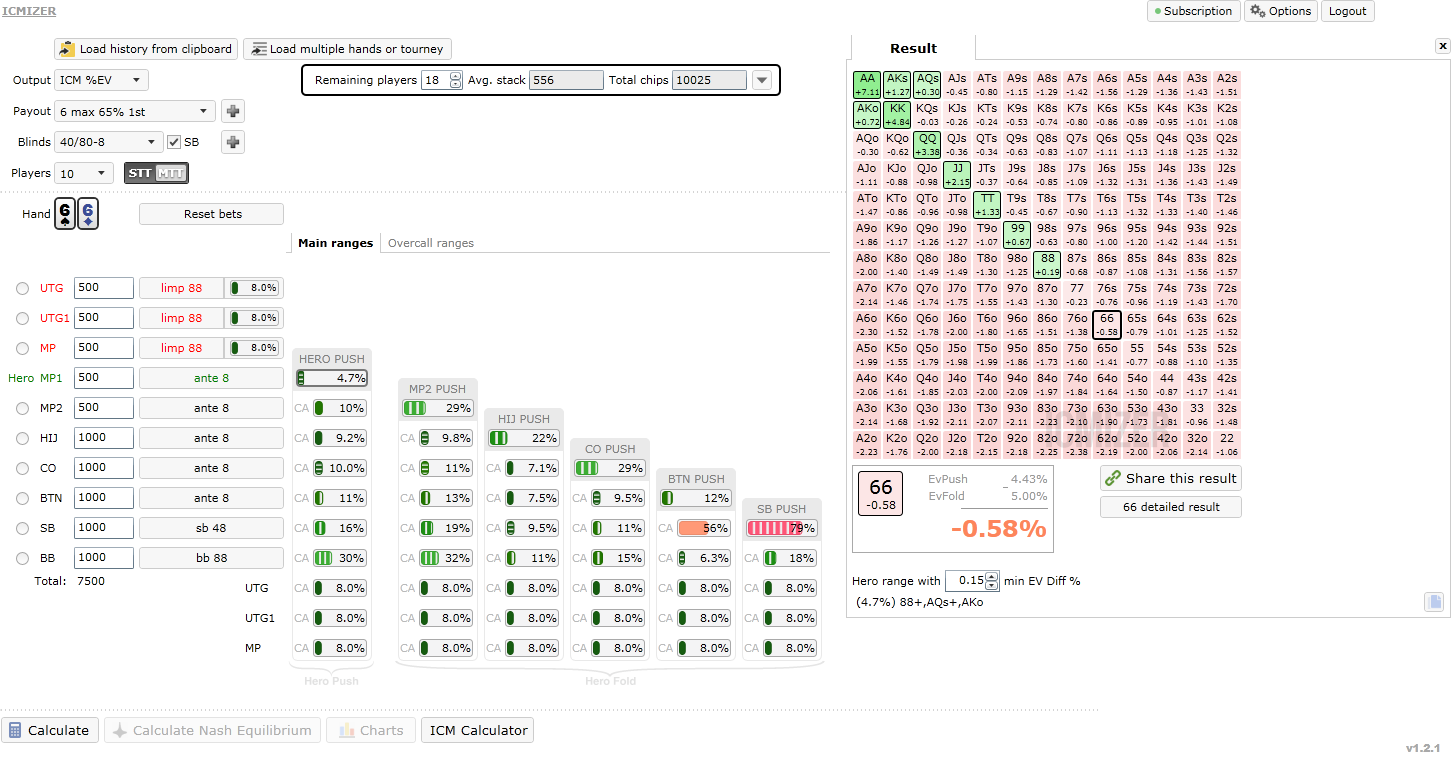
For a long time ICMIZER width was limited to 1000 pixels. Most poker players however are using wide screens these days. You can now resize ICMIZER window and take advantage of larger screen. Results will be displayed near right window border. You can have all the ranges visible at the same time, or MTT stacks, or multiple hands browser. By default results cover opponent ranges or other important information and that can be distracting or inconvenient.
Added support for PT4 IPoker format
An interesting IPoker format where hands are displayed backwards, like HA instead of Ah, or SK instead of Ks is now supported. Please let me know if you have problems with hands of this format.
HM format with these cards is currently not supported, but will be supported soon.
That’s it for today. I hope you will enjoy new ICMIZER capabilities!
Q, ICMIZER developer